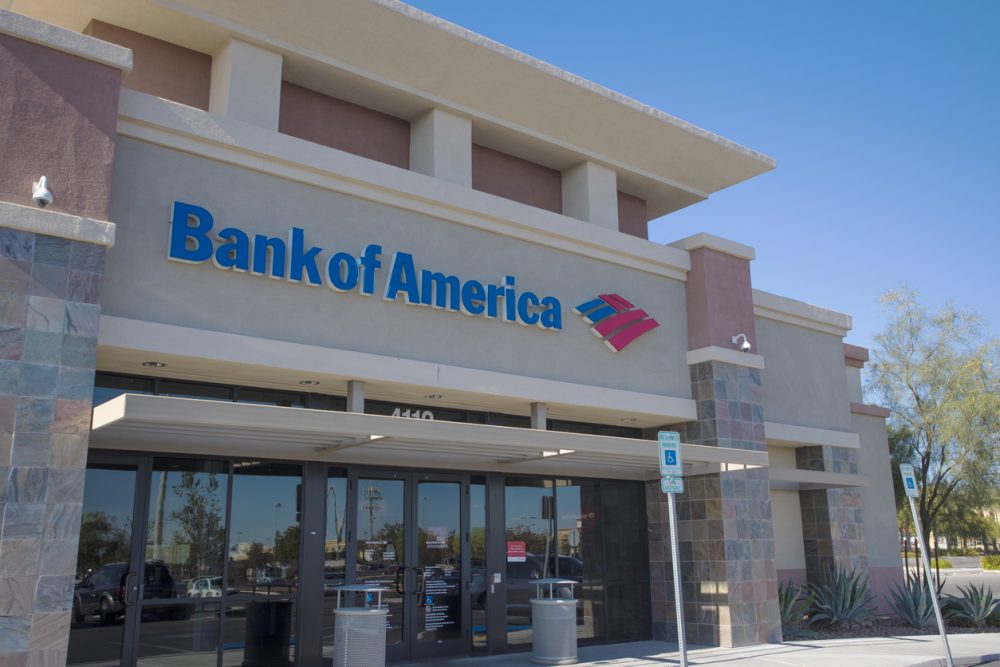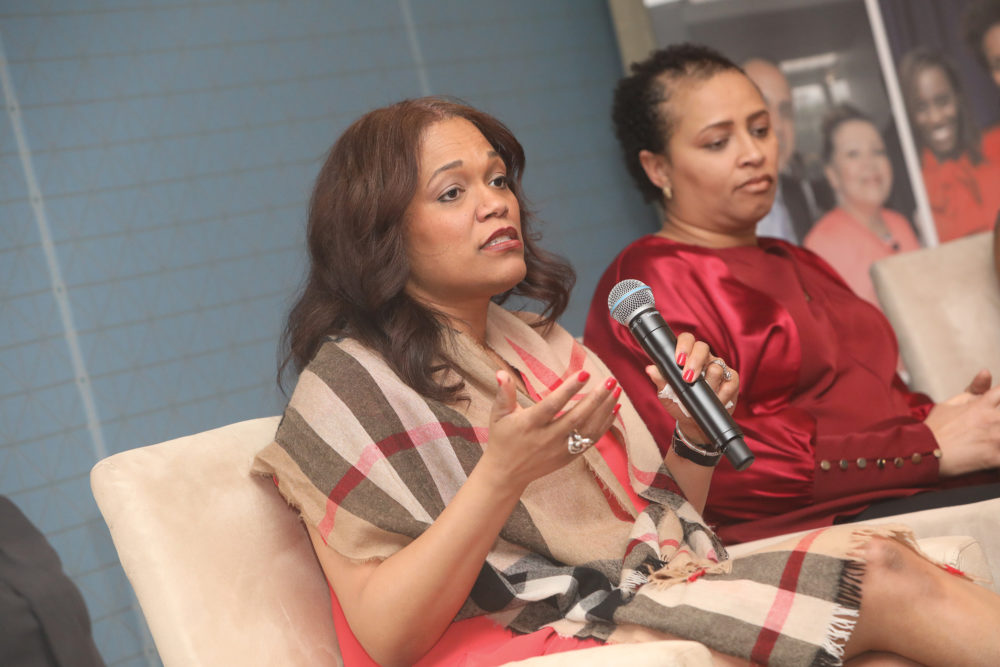[ad_1]
It’s a demanding responsibility to design and implement an inclusive, global rubric for a corporation with more than 200,000 employees worldwide. But that’s the ongoing focus and commitment of Cynthia Bowman, who serves as chief diversity and inclusion officer at Bank of America. In that role, she leads the Global Diversity and Inclusion Council for the financial services colossus that generated revenue of $87.4 billion in 2017. As such, she has the responsibility of partnering with that body, chaired by CEO Brian Moynihan, to define and execute on that D&I strategy and, in turn, help BofA achieve its ambitious business agenda.
This 11-year veteran has been at the forefront of developing transformative policies and programs that have not only bolstered diverse talent acquisition and development at BofA but will be replicated across corporate America. In edited excerpts from this exclusive interview, our editors managed to get a glimpse into how Bowman will achieve her goal of influencing change and progress that creates a “better outcome for clients, employees, and the company holistically.”

A Bank of America branch in Las Vegas (iStock.com/LPETTET)
Share with us Bank of America’s approach to Diversity and Inclusion best practices.
When I think about diversity and inclusion, I think it’s important first to think about how we define it. So diversity is all about our representation, we want to mirror the clients and communities that we serve. Inclusion is really around all of those employees feeling like they matter at an organization. At Bank of America, our work around diversity and inclusion starts at the top and it’s embedded in our culture.
So your CEO, Brian Moynihan, is extremely engaged in this process?
Our CEO chairs our Diversity and Inclusion Council. That council is also represented by senior leaders across the globe, who partner with me. We also have frequent dialogue with our board of directors, and we’re accountable to them and leverage that group to help drive diversity and inclusion at the bank. But one of the things around our best practices is really driving accountability and increasing overall your representation. So, I’d just like to share a few of those stats.
Sure.
Let’s start with women. Women at Bank of America represent more than 50% of our global workforce and more than 40% of our global management team. And in terms of our recruiting class from last year, we hired at a rate of roughly 40% of all women coming into our campus class. From a race/ethnicity perspective, we are more than 40% racially or ethnically diverse as a company, more than 20% racially/ethnically diverse on our board of directors, as well as 50% of our 2017 global campus recruiting class was ethnically or racially diverse.
“Our work around diversity and inclusion starts at the top. It’s embedded in our culture.”
Having gone through those statistics, how does such diversity drive innovation and competitiveness in today’s global, tech-driven business environment?
All of the work that we do connects back to our business strategy and the work that we do to drive responsible growth as an organization. One of the key tenets of responsible growth is to grow in a sustainable manner. That means really engaging in efforts that drive our great place to work for all of our employees.
And that helps you better serve your customers around the globe.
Absolutely. Diversity is just not the right thing to do. It’s good for business.
Share your process of ensuring diverse management companywide. How do African American executives gain access to opportunities to get on the senior management track?
We have several different efforts where we not only invest in our talent from the developmental perspective but also provide sponsorship to protégés to really help them with networking and overall advancement, having someone to advocate for them in their career. So, a few examples. One is we have our Black Executive Leadership Council. That started back in 2012 to support the advancement, development, and retention of our black executive leaders across the company. We also have a Diverse Leaders Sponsorship Program that we’ve been doing for several years. In that particular program, you are assigned a sponsor over several months. Again, that person has a seat at the table to advocate for you in your career. And individuals who have gone through that program are two times more likely to get promoted than their peers.
Any initiatives specifically for African American women?
We also have a Global Women’s Conference, as well as a program that we’ve been doing with Columbia University to advance our woman talent, with a strong focus on women of color. That’s another program where we provide sponsorship, access to leadership, and what we call pathways to progression. Another program we started last year was our Multicultural Women’s Program geared at women in the lower levels of the organization and providing them with sponsors. We noticed that we needed to do more in the advancement of multicultural women.
What shifts have been made to accommodate and anticipate the new crop of workers—millennials, Gen Z—as well as ensure a collaborative cross-generational culture?
We started “Project Next Gen” to look at the next generation of our leaders and their ideas. We [try to find out] what they were looking for as well as the policies and benefits that we offer that could be attractive to the workforce coming through the doors, whether it’s millennials or the most recent generation.
We also have one of our 11 employee networks across the company, 240 chapters strong. We have over 100,000 memberships, which is up 24% year over year. And one of those networks is called I-Gen, which is Intergenerational Network. Through that network, we’ve also built training across the spectrum of age. We have been having workshops for individuals who are younger in their lifespan or tenure with the bank to the older generation to discover some of their unique issues and challenges as well as ensure that our culture is supportive of everyone, regardless of their age at the company.
What have been some of the findings and feedback? How did Bank of America employees respond?
Specifically, one of the things we’ve heard from our millennials is that they want to be with a company that’s socially responsible, that gets engaged in issues that matter to them. In 2016, we’ve witnessed civil strife, more protests, loss of life in various communities where our clients and our employees live. And all of that affected our millennial workforce in different ways.
We started to have more dialogue because we realize that people’s lives don’t stop when they walk in to the four walls of our company. And we introduced several years ago this series called “Courageous Conversations.” What Courageous Conversations has done is engaged about 60,000 participants across our company in dialogue around race, gender, social justice, equality, and other issues. We’ve had conversations on religious inclusion. We’ve had one called “Walk a Mile in My Shoes” around issues that people of color face in the workforce. We even had conversations on the role of the white male in workforce diversity. So, we think that the dialogue is really opening up a conversation not only around how we respond to the world around issues that are happening at the bank but more importantly, creating more empathy, understanding, and awareness of difference. That, in and of itself, we think creates a more inclusive work environment.
As you talk about uncomfortable issues such as race, sexual harassment, and the like, how do you facilitate those conversations so you have productive engagement?
I can tell you the feedback is off the charts. The session that we did on social justice and equality in our New York auditorium, several hundred individuals showed up. We also offered it live to desk-top and several thousand employees joined in that one discussion. We posted that discussion on our Flagscape site, which is our internal sort of Facebook. It had 20,000 hits.
View the listing of the Top Executives in Corporate Diversity 2018.
[ad_2]
Source link

